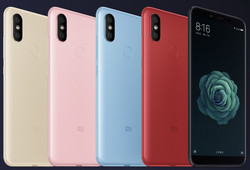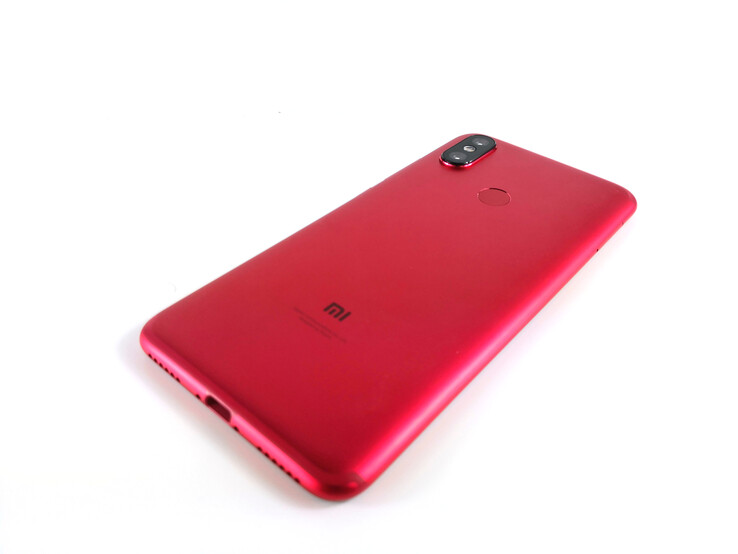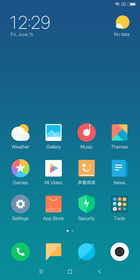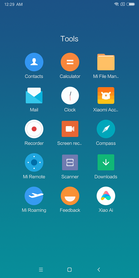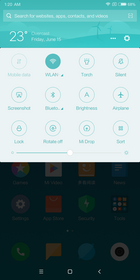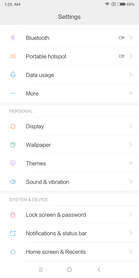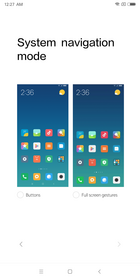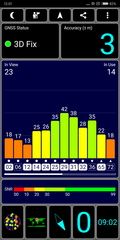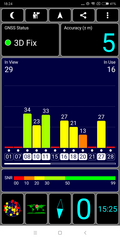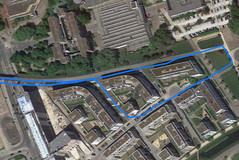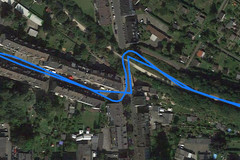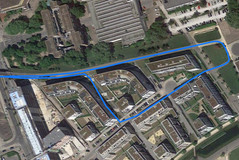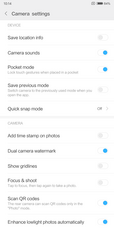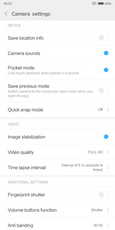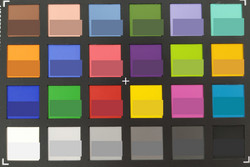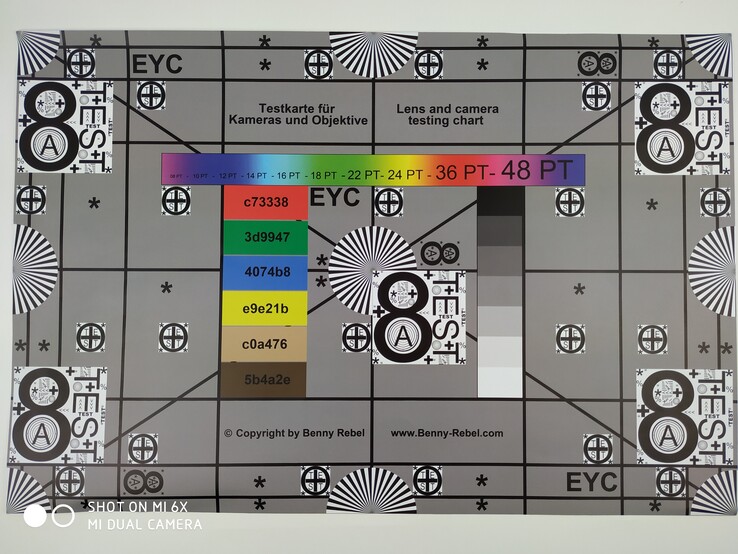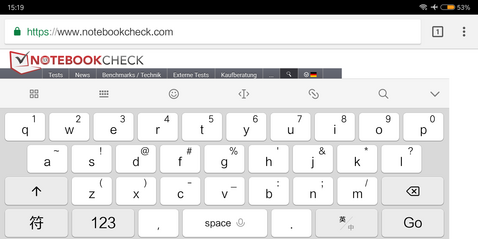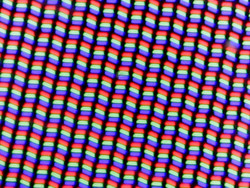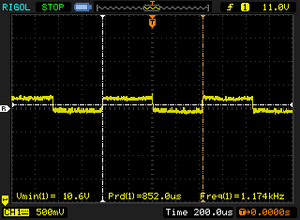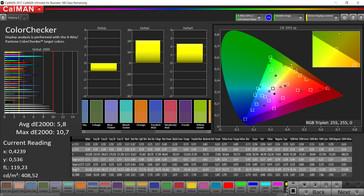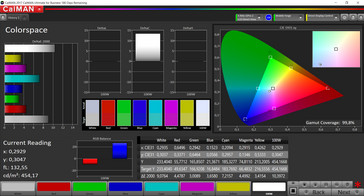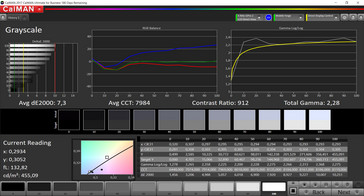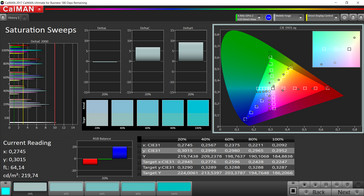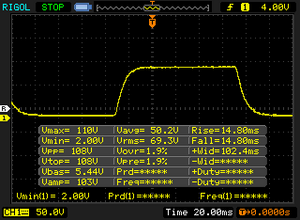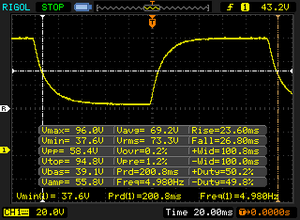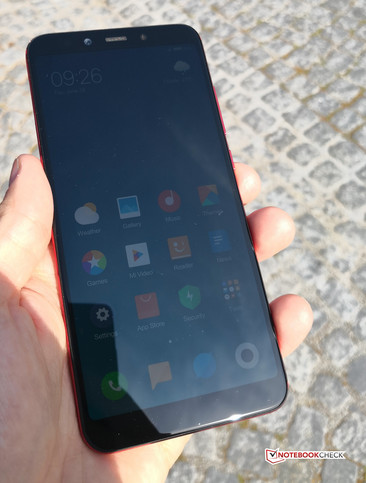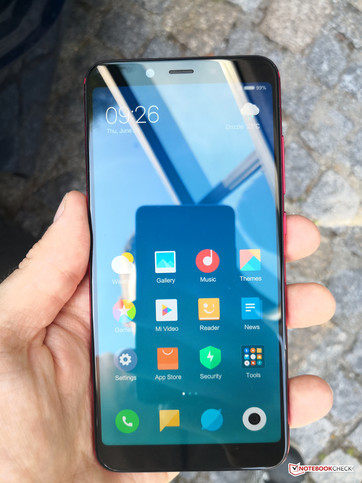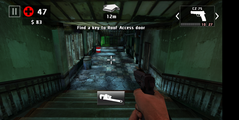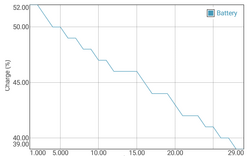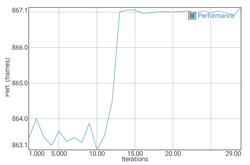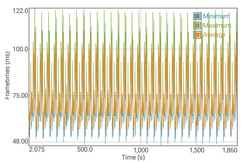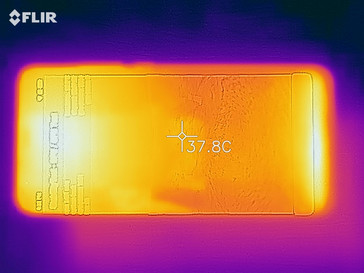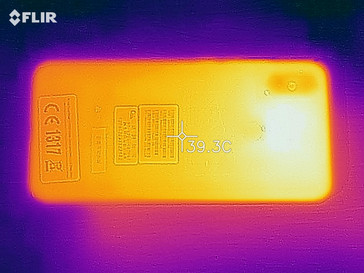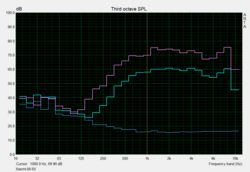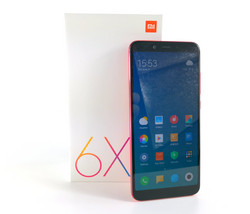Xiaomi Mi 6X (Mi A2) Smartphone Review
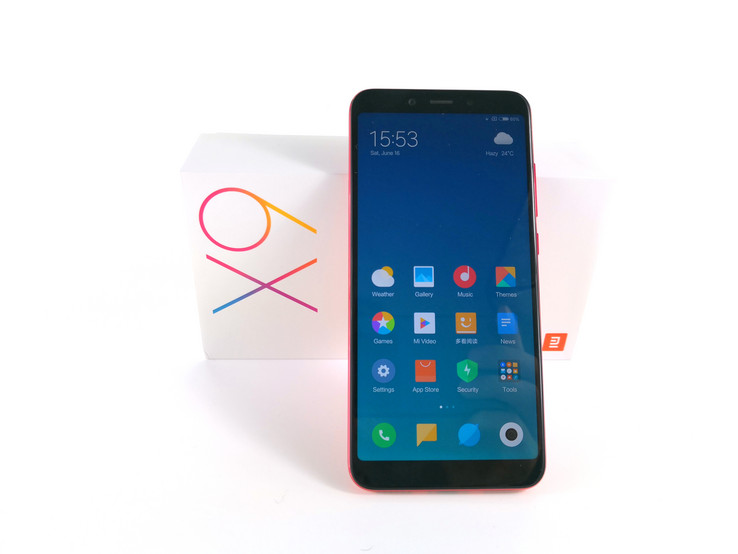
In April of this year, Xiaomi introduced its latest mid-range smartphone, the Mi 6X, in China. The smartphone features Xiaomi’s proprietary launcher, MiUI, and has an aspect ratio of 2:1. In Europe, the smartphone will come with Android One and will be known as the Mi A2.
The Xiaomi Mi 6X (Mi A2) is powered by Qualcomm’s Snapdragon 660, has a 3010-mAh battery and features support for Quick Charge 3.0. Furthermore, the mid-range smartphone comes with a 5.99-inch Full HD+ display, a dual-camera with 12 and 20 MP sensors, a fast lens with an f/1.75 aperture as well as a USB Type-C port. The device can be unlocked via FaceUnlock or through a fingerprint scanner. We have already described the differences between the Mi 6X (Mi A2) and its predecessor in a separate article.
The top-end model of the Mi 6X (Mi A2) features 128 GB of internal storage and 6 GB of RAM. It costs about 260 Euros ($305) without shipping from China. Our review device comes with 64 of storage space and 6 GB of RAM and costs about 235 Euros ($276). The base model of the Mi 6X (Mi A2) costs 210 Euros ($246). It is not sold officially on the European market, so it can only be bought through an importer. You can learn all you need to know about importing smartphones from Asia in our “Import Guide”. The international version of the Xiaomi Mi 6X, the Mi A2 (with Android One), will come to the European market at the beginning of August.
The competing devices include other mid-range smartphones such as the Moto G6 Plus, the TP-Link Neffos N1, the BQ Aquaris VS Plus, the Motorola Moto X4, the HTC U11 Life and the Sony Xperia XA1. We have also included the Nokia 7 Plus in this review. The Nokia 7 Plus offers the same specifications but costs a little more.
Case - the Mi 6X offers a great build quality
The metal case of the Xiaomi Mi 6X (Mi A2) comes in the following color schemes: Black, Gold, Blue, Red and Pink. There is a special edition of the Mi 6X (Hatsune Miku) for manga fans, which has a “turquoise” color scheme.
The entire front of the Mi 6X (Mi A2) is covered with scratch-resistant 2.5-D glass. The glass is slightly rounded at the point where it meets with the metal frame. The IPS display has small bezels. However, the bottom bezel and the top bezel are really big when compared to the current high-end smartphones. This is why the Mi 6X has a screen-to-body ratio of only 78%.
The "Picture Perfect Dual Camera” on the back of the Mi 6X protrudes considerably from the case. Both the look and the feel of the matte aluminum finish are great. The smartphone is also very “grippy”. The case is very rigid as well. The Mi 6X is comfortable to hold in the hand, thanks to its thickness of 7 mm (~0.3 in).
The hardware buttons such as the power button and the volume rocker impress with their quality. The buttons are firmly set and do not wobble. The actuation point is also very clear.
Connectivity - Xiaomi smartphone with good connectivity
The Mi 6X features a status (LED) light for notifications, a fingerprint sensor, Wi-Fi calling, an infrared port as well as Miracast. Casting screen content to an external (Sony) Android TV does not present any problems with the Xiaomi Mi 6X. The USB port is of the Type-C variety. It operates at USB 2.0 speeds and is used for charging the device. Moreover, it supports USB OTG, which means that external input or storage devices can be connected to the smartphone.
With 64 GB of internal eMMC memory, the Xiaomi Mi 6X offers a sufficient amount of storage space. Straight out of the box, only 50 GB of storage is available to the user. Those who need more storage space should get the 128 GB version. The storage capacity of the Xiaomi Mi 6X cannot be expanded with the help of an SD card.
Software - MiUI instead of Android One
As usual, Xiaomi uses its own proprietary launcher MiUI (ROM version 9.5.11 Stable). The smartphone runs Android 8.1. The security patches were last updated in May 2018.
Because the Xiaomi Mi 6X was designed for the Chinese market, it does not feature any Google apps, such as Google Play or Gmail, straight out of the box. Instead, it comes with a suite of Chinese apps. A number of apps come from Xiaomi itself. You can learn how to install Google apps on Chinese smartphones in our “Google Apps” guide.
According to TradingShenzhen, the company that provided the Mi 6X to us, there is going to be an international version that will support Google Services and that will feature additional languages besides English and Chinese (such as German). It will be powered by Android One.
Xiaomi’s proprietary launcher does not resemble stock Android at all. The 9th version of MiUI is very colorful and highly customizable. Installed applications are not contained in an app drawer, but are dispersed across different home-screens. The look of the UI can be changed through Xiaomi’s Theme Store.
In our review, we often came across Chinese text, even though we set English as the default language. MiUI (version 9.5 Stable) is not completely translated into English.
Communication and GPS - Xiaomi smartphone with few LTE bands
The intergraded Wi-Fi module supports the IEEE-802.11 standards a/b/g/n/ac. In combination with our reference-grade router, the Linksys EA8500, the Xiaomi Mi 6X achieves good transfer rates of 307 MBit/s for upload and 247 MBit/s for download. In close proximity to the router (Telekom Speedport, W921V), we measured a signal attenuation of -38 dBm, which is rather high.
The Mi 6X can use two nano-SIM cards at the same time. The Mi 6X’s LTE modem operates at LTE Category 12 speeds of up to 600 MB/s. This applies to both SIM card slots. However, the Mi 6X is not going to operate at such speeds in rural areas of Germany, because it does not support LTE band 20. The international version of the Mi 6X, the Mi A2, is going to support LTE band 20, which means that it is going to cover the 800 MHz frequency range.
For short-distance communication, the Mi 6X features Bluetooth 5.0. However, it does not support NFC.
For geo-location, the Mi 6X relies on the main global positioning systems: GPS, GLONASS and Beidou. Outdoors, your location is acquired relatively quickly with a margin of error of about 3 meters (~10 ft). Indoors, the Mi 6X takes a little longer to determine the user's location and has a slightly higher margin of error.
In order to determine how accurate our review device is when it comes to geo-location, we take it with us on a bike ride. During this ride, we are also accompanied by the professional navigator Garmin Edge 500. At the end of our 9-kilometer (~5.6 mi ride, the mid-range smartphone from Xiaomi and the Garmin Edge 500 deviate from each other by about 10 meters (~33 ft). This is a very good result for a smartphone in this price range. This means that the Mi 6X can be used for navigation without any problems whatsoever.
Telephony and Call Quality
The call quality is on a good level. We did not observe any call drops or reception problems with the Xiaomi Mi 6X. The voice on the other end of the line is very clear and easy to understand. Our call partner also had no trouble understanding what was said during the call. During video calls, the built-in microphones help ensure a decent call quality. That being said, the call volume is a little too low for our taste.
Xiaomi’s phone app has all the usual features such as speed dial, call history as well as direct access to the saved contacts.
Cameras - dual-camera delivers good photos
The Mi 6X features a 12 MP and 20 MP dual-camera module on the back. The 12 MP camera comes from Sony (IMX486) and has an f/1.75 aperture and a pixel size of 1.25 µm. For night shots, there is a 20 MP sensor (Sony IMX376) with a pixel size of 2 µm, which takes in more light thanks to its bigger pixels. It has an identical aperture of f/1.75. Dual-camera systems offer the ability to dynamically adjust the depth of field to produce images with a Bokeh effect.
The Xiaomi Mi 6X (Mi A2) follows the trend of building AI capabilities into smartphones. The Xiaomi Mi 6X’s camera boasts support for object and scene recognition, both when recording video and when taking photos. It also uses AI for creating the Bokeh effect.
The Xiaomi Mi 6X relies on software image stabilization. It does not feature support for optical image stabilization. The Chinese smartphone is equipped with a dual-tone LED flash for taking shots in poor lighting conditions. Our review device can record video in 4K at 30 FPS. The video quality is good enough for a device in this price range. Having said that, it is a little jittery.
The picture quality of the Mi 6X’s 12 MP Sony camera is quite impressive. The image quality is very good for a 250-Euro ($293) smartphone. Dynamic range, sharpness and color reproduction are quite good. However, the shutter speed is somewhat lacking. The Mi 6X’s camera reveals its weaknesses in low-light conditions. Despite the wide aperture, the images look relatively dim and are plagued by noise. The pictures also look blurry.
The 20 MP front-facing camera also offers a good picture quality. However, it does not feature autofocus, which means that the sharpness of the photos is not always optimal. It can shoot video in Full HD (1920x1080) at 30 FPS.
The Mi 6X’s camera has three modes: HDR, Portrait and Pro. The Pro mode allows the user to manually adjust things such as the white balance, focus, ISO, shutter speed and the exposure compensation. You can also choose the preferred image sensor in this mode.
We examine the color reproduction of the Xiaomi smartphone under controlled lighting conditions. When compared to the actual reference colors, the colors of the Mi 6X appear to be quite accurate. The shots of the X-Rite ColorChecker Passport (without any image processing applied) that we took with the dual-camera system confirm this impression. That being said, the colors do look a little too warm.
In order to assess the sharpness of the photos, we photograph our test chart under fixed lighting conditions. The images we took with the Mi 6X appear detailed and sharp. All areas of the images appear to have the same level of sharpness.
Accessories and Warranty
The box contains the quick start guide, a 10-watt charger (5V, 2 A), a USB cable, a protective case and a USB Type-C to 3.5-mm audio jack adapter. There are no headphones in the box. TradingShenzhen also put an EU-compliant power plug in the box. The smartphone does not ship with this plug included.
The smartphone comes with a 12-month warranty. Please see our Guarantees, Return policies and Warranties FAQ for country-specific information.
Input Devices & Handling - the Mi 6X has an accurate touchscreen
Sogou Keyboard serves as the default keyboard. It features Chinese characters. Google’s GBoard, which normally comes with Android, is also installed and can be selected.
The touchscreen has a smooth surface and responds promptly to inputs even at the edges. The fingerprint reader on the back works fast and reliably. Moreover, the smartphone can also be unlocked via face recognition. However, face recognition does not work very well in practice. Xiaomi really needs to improve its face recognition software.
The smartphone is controlled via on-screen buttons for “back”, “overview” and “home”. It can also be controlled through gestures similar to the Apple iPhone X. You can reach the home screen with a swipe from the bottom of the display. If you swipe up from the bottom of the screen and then pause you will get to the recent apps menu. To go back, you will need to swipe either from the left or the right edge of the screen towards the center of the display.
Display ... somewhat dim
The 6-inch LCD screen of the Mi 6X has a native resolution of 2160x1080 and a pixel density of 400 PPI. This means that the Xiaomi smartphone is on the same level as other competitors, which also feature Full HD displays. The 1080p resolution is high enough for day-to-day use.
The Xiaomi Mi 6X uses PWM for brightness control. The PWM flickering crops up at 21% brightness and lower. Because the pulse width modulation operates at a very high frequency, even susceptible individuals should not experience any adverse effects such as headaches or eye strain.
The maximum brightness of 461 cd/m² when displaying pure white is quite average. We measured a brightness of 457 cd/m² in the realistically-oriented APL50 test, in which the screen displays a pattern that consists of evenly disubstituted dark and bright squares. In auto-brightness mode, the screen brightness is very similar. Here it amounts to 461 cd/m².
| |||||||||||||||||||||||||
Brightness Distribution: 91 %
Center on Battery: 459 cd/m²
Contrast: 977:1 (Black: 0.47 cd/m²)
ΔE ColorChecker Calman: 5.8 | ∀{0.5-29.43 Ø4.78}
ΔE Greyscale Calman: 7.3 | ∀{0.09-98 Ø5}
99.8% sRGB (Calman 2D)
Gamma: 2.28
CCT: 7984 K
| Xiaomi Mi 6X LCD IPS, 2160x1080, 6" | TP-Link Neffos N1 IPS, 1920x1080, 5.5" | BQ Aquaris VS Plus IPS, 1920x1080, 5.5" | Sony Xperia XA1 IPS, 1280x720, 5" | Nokia 7 Plus IPS, 2160x1080, 6" | HTC U11 Life SLCD, 1920x1080, 5.2" | Motorola Moto X4 LTPS IPS, 1920x1080, 5.2" | HTC U12 Plus Super LCD 6, 2880x1440, 6" | |
|---|---|---|---|---|---|---|---|---|
| Screen | 23% | 12% | -3% | 34% | 18% | 9% | 29% | |
| Brightness middle (cd/m²) | 459 | 580 26% | 634 38% | 522 14% | 458 0% | 545 19% | 469 2% | 395 -14% |
| Brightness (cd/m²) | 441 | 560 27% | 635 44% | 499 13% | 463 5% | 526 19% | 479 9% | 402 -9% |
| Brightness Distribution (%) | 91 | 94 3% | 96 5% | 92 1% | 92 1% | 87 -4% | 86 -5% | 90 -1% |
| Black Level * (cd/m²) | 0.47 | 0.3 36% | 0.49 -4% | 0.74 -57% | 0.22 53% | 0.42 11% | 0.37 21% | 0.37 21% |
| Contrast (:1) | 977 | 1933 98% | 1294 32% | 705 -28% | 2082 113% | 1298 33% | 1268 30% | 1068 9% |
| Colorchecker dE 2000 * | 5.8 | 5.6 3% | 5.9 -2% | 4.2 28% | 4 31% | 4.9 16% | 5.5 5% | 1.6 72% |
| Colorchecker dE 2000 max. * | 10.7 | 11.2 -5% | 11.6 -8% | 11.5 -7% | 7.4 31% | 8.5 21% | 10.7 -0% | 3.4 68% |
| Greyscale dE 2000 * | 7.3 | 7.4 -1% | 7.8 -7% | 6.4 12% | 4.7 36% | 5.4 26% | 6.7 8% | 1.1 85% |
| Gamma | 2.28 96% | 2.22 99% | 2.16 102% | 2.18 101% | 2.19 100% | 2.31 95% | 2.1 105% | 2.14 103% |
| CCT | 7984 81% | 8584 76% | 8464 77% | 7044 92% | 7425 88% | 7610 85% | 8064 81% | 6536 99% |
* ... smaller is better
Screen Flickering / PWM (Pulse-Width Modulation)
| Screen flickering / PWM detected | 1174 Hz | ≤ 21 % brightness setting | |
The display backlight flickers at 1174 Hz (worst case, e.g., utilizing PWM) Flickering detected at a brightness setting of 21 % and below. There should be no flickering or PWM above this brightness setting. The frequency of 1174 Hz is quite high, so most users sensitive to PWM should not notice any flickering. In comparison: 53 % of all tested devices do not use PWM to dim the display. If PWM was detected, an average of 8111 (minimum: 5 - maximum: 343500) Hz was measured. | |||
An IPS panel in the Xiaomi Mi 6X cannot achieve perfect blacks of an AMOLED display due to its backlight. The black value of 0.47 cd/m² is, actually, very high even for an LCD screen. The contrast ratio of less than 1000:1 is also low. In the APL 50 test, in which the screen displays a pattern that consists of evenly disubstituted dark and bright areas, the contrast ratio falls even further (787:1) and the black value rises up to 0.58 cd/m².
We use a photo-spectrometer running SpectraCal's CalMAN software to examine the color reproduction of the display. A DeltaE 2000 deviation of 5.8 for the colors and 7.3 for the grayscale is okay for a smartphone in this price range. The color temperature of 7984 K is way too cool, which is why the display suffers from a slight turquoise color cast. You can adjust the contrast or change color profiles in the display settings.
Display Response Times
| ↔ Response Time Black to White | ||
|---|---|---|
| 29.6 ms ... rise ↗ and fall ↘ combined | ↗ 14.8 ms rise | |
| ↘ 14.8 ms fall | ||
| The screen shows relatively slow response rates in our tests and may be too slow for gamers. In comparison, all tested devices range from 0.1 (minimum) to 240 (maximum) ms. » 78 % of all devices are better. This means that the measured response time is worse than the average of all tested devices (20.2 ms). | ||
| ↔ Response Time 50% Grey to 80% Grey | ||
| 50.4 ms ... rise ↗ and fall ↘ combined | ↗ 23.6 ms rise | |
| ↘ 26.8 ms fall | ||
| The screen shows slow response rates in our tests and will be unsatisfactory for gamers. In comparison, all tested devices range from 0.165 (minimum) to 636 (maximum) ms. » 86 % of all devices are better. This means that the measured response time is worse than the average of all tested devices (31.6 ms). | ||
Performance - Qualcomm Snapdragon 660 offers more than enough power
The Xiaomi Mi 6X relies on a Qualcomm chip from the 600 series. The Snapdragon 660 has eight Kryo 260 cores. Four of these cores run at 2.2 GHz (high-performance cores) and the other four (energy-efficient cores) at 1.8 GHz. Thanks to a 14-nanometer manufacturing process, the energy efficiency has been significantly improved when compared to the predecessor, the Snapdragon 625. The Adreno 512 serves as the GPU.
The Xiaomi Mi 6X performs almost as well as the Nokia 7 Plus with stock Android. The Adreno 512 does a great job. In our benchmark suite, the Mi 6X dominates the rest of the mid-range competition when it comes to the SoC performance.
In day-to-day use, the Xiaomi Mi 6X is very responsive. Animations are smooth and stuttering or lags are imperceivable. The Mi 6X is somewhat laggy when multitasking. Our review device takes a noticeably longer time to charge when it is used while charging.
| AnTuTu v7 - Total Score (sort by value) | |
| Xiaomi Mi 6X | |
| TP-Link Neffos N1 | |
| BQ Aquaris VS Plus | |
| Nokia 7 Plus | |
| HTC U12 Plus | |
| Average Qualcomm Snapdragon 660 (116346 - 143551, n=10) | |
| Lightmark - 1920x1080 1080p (sort by value) | |
| Sony Xperia XA1 | |
| Nokia 7 Plus | |
| Average Qualcomm Snapdragon 660 (n=1) | |
| Basemark ES 3.1 / Metal - offscreen Overall Score (sort by value) | |
| Xiaomi Mi 6X | |
| Sony Xperia XA1 | |
| Nokia 7 Plus | |
| Average Qualcomm Snapdragon 660 (349 - 353, n=2) | |
| Average of class Smartphone (205 - 7731, n=36, last 2 years) | |
The performance in Google's Chrome browser is absolutely satisfactory. The Mi 6X is ahead in all browser benchmarks and performs very well in practice. However, demanding sites take a little longer to load.
| JetStream 1.1 - Total Score | |
| HTC U12 Plus (Chrome 66) | |
| Nokia 7 Plus (Chrome 60) | |
| Xiaomi Mi 6X (Chrome 67) | |
| Average Qualcomm Snapdragon 660 (45.3 - 55.5, n=12) | |
| Motorola Moto X4 (Chrome 63) | |
| TP-Link Neffos N1 (Chrome 62) | |
| HTC U11 Life (Chrome 63) | |
| Sony Xperia XA1 (Chrome 58) | |
| Octane V2 - Total Score | |
| Average of class Smartphone (2228 - 121337, n=201, last 2 years) | |
| HTC U12 Plus (Chrome 66) | |
| Nokia 7 Plus (Chrome 60) | |
| Xiaomi Mi 6X (Chrome 67) | |
| Average Qualcomm Snapdragon 660 (8463 - 10945, n=14) | |
| Motorola Moto X4 (Chrome 63) | |
| HTC U11 Life (Chrome 63) | |
| TP-Link Neffos N1 (Chrome 62) | |
| Sony Xperia XA1 (Chrome 58) | |
| BQ Aquaris VS Plus | |
| Mozilla Kraken 1.1 - Total | |
| BQ Aquaris VS Plus (Chrome 65) | |
| TP-Link Neffos N1 (Chrome 62) | |
| Sony Xperia XA1 | |
| HTC U11 Life (Chrome 63) | |
| Motorola Moto X4 (Chrome 63) | |
| Xiaomi Mi 6X (Chrome 67) | |
| Average Qualcomm Snapdragon 660 (3796 - 4769, n=13) | |
| Nokia 7 Plus (Chrome 60) | |
| HTC U12 Plus (Chrome 66) | |
| Average of class Smartphone (257 - 28190, n=156, last 2 years) | |
| WebXPRT 2015 - Overall | |
| HTC U12 Plus (Chrome 66) | |
| Xiaomi Mi 6X (Chrome 67) | |
| Average Qualcomm Snapdragon 660 (159 - 182, n=8) | |
| Nokia 7 Plus (Chrome 60) | |
| HTC U11 Life (Chrome 63) | |
| Motorola Moto X4 (Chrome 63) | |
| Sony Xperia XA1 (Chrome 58) | |
| BQ Aquaris VS Plus (Chrome 65) | |
* ... smaller is better
The performance of the internal eMMC memory is quite average. However, it is on the level of other mid-range devices. Smartphones in this price range almost never feature modern UFS memory, which is much faster. This is why the read and write rates are quite low.
| Xiaomi Mi 6X | TP-Link Neffos N1 | BQ Aquaris VS Plus | Sony Xperia XA1 | Nokia 7 Plus | HTC U11 Life | Motorola Moto X4 | HTC U12 Plus | Average 64 GB eMMC Flash | Average of class Smartphone | |
|---|---|---|---|---|---|---|---|---|---|---|
| AndroBench 3-5 | 132% | -10% | 9% | 42% | 135% | 157% | 408% | 91% | 1646% | |
| Sequential Read 256KB (MB/s) | 272 | 262.1 -4% | 274.3 1% | 248.5 -9% | 283.1 4% | 268 -1% | 281.6 4% | 709 161% | 277 ? 2% | 2223 ? 717% |
| Sequential Write 256KB (MB/s) | 203.7 | 184.6 -9% | 205.1 1% | 127.8 -37% | 211.6 4% | 120 -41% | 120.5 -41% | 195.8 -4% | 178.4 ? -12% | 1838 ? 802% |
| Random Read 4KB (MB/s) | 73 | 57.4 -21% | 48.3 -34% | 66.2 -9% | 54.7 -25% | 39.3 -46% | 45.4 -38% | 118.1 62% | 60.7 ? -17% | 295 ? 304% |
| Random Write 4KB (MB/s) | 6.89 | 45.48 560% | 6.4 -7% | 13.2 92% | 19.62 185% | 50.2 629% | 55.3 703% | 104.2 1412% | 33.8 ? 391% | 335 ? 4762% |
| Sequential Read 256KB SDCard (MB/s) | 75.9 ? | 84.5 ? | 78.4 ? | 82.2 | 82.8 ? | 83.9 ? | 84.3 ? | 77.4 ? | ||
| Sequential Write 256KB SDCard (MB/s) | 67.4 ? | 60.6 ? | 68 ? | 62.3 | 59.8 ? | 60 ? | 63.6 ? | 58.3 ? |
Gaming
The Qualcomm Adreno 512 supports all the latest APIs such as Vulkan, OpenGL and Direct3D 12. This relatively powerful graphics unit is capable of running even demanding 3D games from the Google Play Store at decent frame rates. Current titles such as the racing game “Asphalt 8: Airborne” and the first-person shooter “Dead Trigger 2” run most of the time at 28 to 30 FPS on the high settings. We use “GameBench” to record frame rates in the games. Both the touchscreen and the motion sensor work very well while gaming.
| World of Tanks Blitz | |||
| Settings | Value | ||
| high, 0xAA, 0xAF | 60 fps | ||
| Dead Trigger 2 | |||
| Settings | Value | ||
| high | 30 fps | ||
| Asphalt 8: Airborne | |||
| Settings | Value | ||
| high | 28 fps | ||
Emissions - The battery of the Mi 6X is too small
Temperature
The surface temperatures of the Xiaomi Mi 6X stay relatively low even under continuous load. When idle, the surface temperatures of the Mi 6X peak at 28 °C (82.4 °F) on the back.
We check to see how well the SoC does under sustained load with the help of the GFXBench ES3.1 battery test. Here, the same sequence is run 30 times in a row and the results of each sequence run are recorded. The Mi 6X does not throttle down in the demanding Manhattan section (OpenGL ES 3.1). The benchmark results reveal a slightly fluctuating frame rate. The fluctuations lie within one percent of each other. This is why drops in performance under load are highly unlikely.
(+) The maximum temperature on the upper side is 37.2 °C / 99 F, compared to the average of 35.2 °C / 95 F, ranging from 21.9 to 247 °C for the class Smartphone.
(+) The bottom heats up to a maximum of 36.7 °C / 98 F, compared to the average of 34 °C / 93 F
(+) In idle usage, the average temperature for the upper side is 29.3 °C / 85 F, compared to the device average of 32.9 °C / 91 F.
Speakers
The Mi 6X has only one speaker, which is located on the bottom of the device. With 84 dB(A), it is sufficiently loud and sounds good enough for watching short videos such as music clips. Bass is almost completely missing, but the highs are reproduced very faithfully. The highs only become distorted at 15 kHz or above.
Xiaomi forgoes a dedicated audio jack. Therefore, the USB port serves as the audio port. The audio quality is not superb, but is good enough for a 250-Euro ($293) smartphone.
Xiaomi Mi 6X audio analysis
(+) | speakers can play relatively loud (84.1 dB)
Bass 100 - 315 Hz
(-) | nearly no bass - on average 27.6% lower than median
(±) | linearity of bass is average (9.7% delta to prev. frequency)
Mids 400 - 2000 Hz
(+) | balanced mids - only 3.3% away from median
(+) | mids are linear (5.3% delta to prev. frequency)
Highs 2 - 16 kHz
(+) | balanced highs - only 2.7% away from median
(+) | highs are linear (4% delta to prev. frequency)
Overall 100 - 16.000 Hz
(±) | linearity of overall sound is average (19.1% difference to median)
Compared to same class
» 24% of all tested devices in this class were better, 9% similar, 67% worse
» The best had a delta of 11%, average was 35%, worst was 134%
Compared to all devices tested
» 45% of all tested devices were better, 7% similar, 48% worse
» The best had a delta of 4%, average was 24%, worst was 134%
HTC U11 Life audio analysis
(+) | speakers can play relatively loud (90.2 dB)
Bass 100 - 315 Hz
(-) | nearly no bass - on average 27.5% lower than median
(+) | bass is linear (6.7% delta to prev. frequency)
Mids 400 - 2000 Hz
(±) | reduced mids - on average 9% lower than median
(+) | mids are linear (6.9% delta to prev. frequency)
Highs 2 - 16 kHz
(±) | higher highs - on average 9% higher than median
(+) | highs are linear (4.7% delta to prev. frequency)
Overall 100 - 16.000 Hz
(±) | linearity of overall sound is average (25.4% difference to median)
Compared to same class
» 63% of all tested devices in this class were better, 7% similar, 31% worse
» The best had a delta of 11%, average was 35%, worst was 134%
Compared to all devices tested
» 77% of all tested devices were better, 5% similar, 18% worse
» The best had a delta of 4%, average was 24%, worst was 134%
Battery Life
Energy Consumption
When idle, the Xiaomi Mi 6X is very energy-efficient for a 6-inch smartphone. However, it is less energy-efficient under sustained load. All in all, the Mi 6X consumes a little less power than the Nokia 7 Plus, which has the same hardware. Nevertheless, there is still some room for improvement with the Mi 6X.
| Off / Standby | |
| Idle | |
| Load |
|
Key:
min: | |
| Xiaomi Mi 6X 3010 mAh | TP-Link Neffos N1 3260 mAh | BQ Aquaris VS Plus 3400 mAh | Sony Xperia XA1 2300 mAh | Nokia 7 Plus 3800 mAh | HTC U11 Life 2600 mAh | Motorola Moto X4 3000 mAh | HTC U12 Plus 3500 mAh | Average Qualcomm Snapdragon 660 | Average of class Smartphone | |
|---|---|---|---|---|---|---|---|---|---|---|
| Power Consumption | 19% | -8% | 43% | -6% | 7% | 13% | -29% | -41% | -26% | |
| Idle Minimum * (Watt) | 0.65 | 0.69 -6% | 0.79 -22% | 0.64 2% | 0.65 -0% | 0.63 3% | 0.65 -0% | 0.77 -18% | 1.052 ? -62% | 0.848 ? -30% |
| Idle Average * (Watt) | 1.94 | 1.64 15% | 2.29 -18% | 0.81 58% | 1.76 9% | 2.1 -8% | 1.51 22% | 2.18 -12% | 2.62 ? -35% | 1.434 ? 26% |
| Idle Maximum * (Watt) | 1.97 | 1.67 15% | 2.3 -17% | 0.86 56% | 1.78 10% | 2.15 -9% | 1.57 20% | 2.21 -12% | 2.88 ? -46% | 1.618 ? 18% |
| Load Average * (Watt) | 4.65 | 2.59 44% | 3.84 17% | 2.09 55% | 4.47 4% | 3.34 28% | 3.88 17% | 6.25 -34% | 5.1 ? -10% | 7.01 ? -51% |
| Load Maximum * (Watt) | 5.93 | 4.36 26% | 5.95 -0% | 3.31 44% | 9.13 -54% | 4.83 19% | 5.47 8% | 10.16 -71% | 9.08 ? -53% | 11.3 ? -91% |
* ... smaller is better
Battery Life
The Xiaomi Mi 6X achieves a battery run time of 8 hours and 15 minutes in our practically-oriented Wi-Fi test with the display brightness set to 150 cd/m². When compared to the competition, the 3000-mAh battery appears quite small. The Mi 6X does better in our Full HD video test. The battery performance under load is also impressive. Here the Mi 6X lasts a little longer than the Nokia 7 Plus.
| Xiaomi Mi 6X 3010 mAh | TP-Link Neffos N1 3260 mAh | BQ Aquaris VS Plus 3400 mAh | Sony Xperia XA1 2300 mAh | Nokia 7 Plus 3800 mAh | HTC U11 Life 2600 mAh | Motorola Moto X4 3000 mAh | HTC U12 Plus 3500 mAh | |
|---|---|---|---|---|---|---|---|---|
| Battery runtime | 55% | 29% | 33% | 24% | 53% | 39% | 9% | |
| Reader / Idle (h) | 17.4 | 23.9 37% | 28.4 63% | 30.3 74% | 27.5 58% | 24.2 39% | ||
| H.264 (h) | 10.1 | 12.5 24% | 11.8 17% | 13.3 32% | 11.5 14% | 7.7 -24% | ||
| WiFi v1.3 (h) | 8.3 | 12.9 55% | 10.7 29% | 11.3 36% | 11.2 35% | 12.1 46% | 11 33% | 8.5 2% |
| Load (h) | 3.2 | 4.3 34% | 2.6 -19% | 5.1 59% | 4.8 50% | 3.8 19% |
Pros
Cons
Verdict - Xiaomi Mi 6X impresses
The Xiaomi Mi 6X is a powerful mid-range smartphone, which costs less than similarly-equipped smartphones that are available in Europe. The performance and connectivity options are impressive for a smartphone in this price range. The build quality and the aluminum case are also on another level.
Xiaomi has made some cuts when it comes to the speaker, the missing SD card slot and the relatively low battery capacity. Face recognition also performs very poorly and the dual-camera module struggles in low-light conditions.
The limited availability, Chinese software and insufficient LTE coverage make the Mi 6X hard to recommend to German users. All of this will change when the Mi A2 comes to Europe.
The Xiaomi Mi 6X will become interesting as soon as the sibling model Mi A2 comes to the European market, which should happen in early August. The Mi A2 will feature Android One and will reportedly support LTE band 20. The Mi 6X is a well-rounded smartphone that offers powerful hardware and makes only a few concessions when compared to other devices in this price range.
Xiaomi Mi 6X
- 07/02/2018 v6 (old)
Marcus Herbrich




